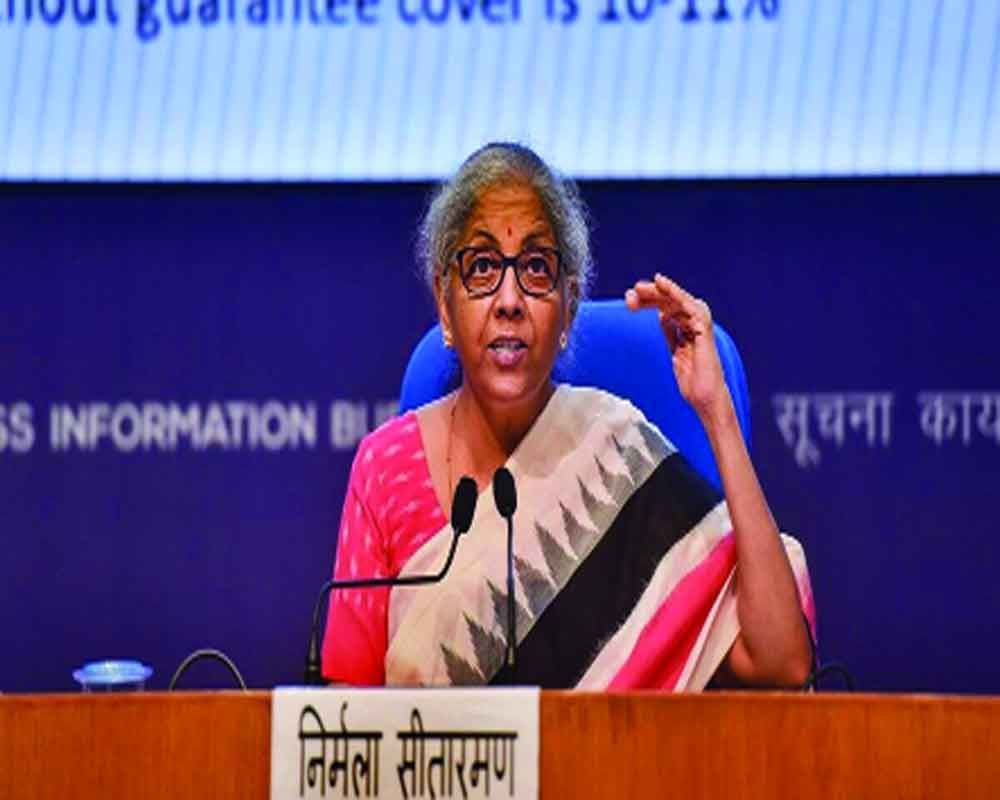Instead of trying to privatise public sector banks, Govt and the RBI must improve their efficiency and credibility
While presenting the budget in 2021, Finance Minister Nirmala Sitharaman announced that the Government budgeted Rs 1.75 lakh crore from stake sale in public sector companies and financial institutions. This included two public sector banks. Earlier, the Niti Aayog had recommended the privatisation of three such banks—Bank of Maharashtra, Indian Overseas Bank and Punjab
and Sind Bank.
In July 2021, Finance Secretary T.V. Somanathan stated, “We have now announced that the public sector banks, most of them will eventually be privatized. Now saying eventually privatised and actually privatising them are two different things, but we are actively engaged in privatising them. And banking is one of those sectors where only a bare minimum public sector banks will eventually remain that is the stated policy.” About a million bank employees struck work in December 2021 opposing the government’s move to privatise banks. Leaving aside the merit or otherwise of privatisation, here an attempt is made to analyse just to reveal to what extent the possibility of privatization of banks exists today.
First and foremost, amending the Banking companies’ acquisition and transfer laws of 1970 and 1980 and the Banking Regulation Act, 1949, is required to do any privatisation of banks. This may be possible as the ruling party is having a comfortable majority in Parliament.
There exists an ‘on tap license norms for banks’ released by the Reserve Bank of India. Though these norms are applicable for any new bank licence, it should be construed as equally applicable for any new entrant who wants to buy any bank, as the RBI may not relax any
such norms.
Any selling of government banks can be based on its valuation. One way to know the valuation is based on its present market capitalisation, as these banks are quoted in the stock exchange. As per data from the National Stock Exchange, these banks’ market capitalisation comes to Rs 724,436.21 crore (March 31, 2022). These banks are not fully owned by the government. The value of government holding in these banks (based on market cap) comes to Rs 480,207.35 crore. Hence it may be important to find buyers who have financial powers at least to this extent. In the eventuality of successful privatisation, the market cap may go up also based on investors’ perception.
Large industrial houses, whose income from non-banking sources are over 40 per cent of total, will not be eligible to set up a bank in the country as per the RBI’s bank licence norms. This means that industrial houses like Reliance, Adani, Tatas, and Birlas cannot have any banking licence and hence cannot participate in the government’s programme to privatise banks. Only individuals with 10 years of experience, as well as business groups with Rs 5,000 crore of total assets will be eligible for a bank licence provided the non-financial business of the group does not account for 40 per cent or more in terms of total assets/in terms of gross income.
There do not seem to be any individuals (without industrial connection) to have net worth to take over any Government bank.
The existing private banks may be eligible to take over government banks, provided they are willing to bid for it. But here there are two constraints. Firstly, the private banks may not be interested in buying the Government banks, considering the work culture and huge staff strength. It will be a long process to change work culture in an organisation with decades of standing. Getting rid of excess staff will also be difficult.
Secondly, the private banks do not have enough surplus funds to take over any banks. These are mandated to have a cash reserve ratio of 4.5 per cent and a statutory liquidity ratio of 18 per cent. Hence any bank can comfortably lend only 78 per cent of its deposits. If any bank is lending more than this, it is out of borrowings and not deposits. We call it credit-deposit ratio. Now see the credit-deposit ratios of some leading private banks (see the table). One can see that invariably all these banks are having CD ratio of more than 78 per cent and hence they are borrowing to meet their credit demand. Financial position of these banks will not allow them to buy government banks.
Yet another type of eligible entity to buy Government banks may be non-banking financial companies (NBFCs). They may come under the fit and proper criteria. However, an NBFC which is a part of a group where the non-financial business of the group accounts for 40 per cent or more in terms of total assets/ gross income is not eligible to become a bank.
Leading NBFCs like Bajaj Finance Limited, Shriram Transport Finance Company Limited, Aditya Birla Capital Limited, L&T Finance Holdings Limited, Cholamandalam Investment and Finance Company Limited, and Sundaram Finance may all be part of the industrial group and may not get the banking licence.
( The writer is a retired banker. The views expressed are personal.)


























